By Bruce Petty
On November 3, 2011, at 0945, the hydrographic ship HMNZS Resolution discovered what appeared to be an aircraft in the waters near Gavutu Island in the Solomon Island group. Almost 70 years earlier U.S. Marines secured these islands in Operation Watchtower.
Matt Wray—then a lieutenant commander—was in command of the Resolution. Ewan Stevenson had recently joined the ship as a voluntary Pacific War history consultant. AHSO [Able Rate Hydrographic Systems Operator] Julie Butler was the sonar operator and the one who first observed what Stevenson recognized as a Grumman F4F Wildcat fighter from World War II. Although the sonar image was not detailed, later that day an ROV (remotely operated vehicle) revealed an intact Wildcat. Later labeled the “Gavutu Wildcat,” by Stevenson, it would become the object of further efforts in the area in 2014 and 2018.
In 2011 the New Zealand Defence Force Operational Headquarters combined numerous requests from the southwest Pacific together under the standing Pacific operation name, “CALYPSO.”After completing duties as the Royal New Zealand Navy’s Review Ship for its 70th Anniversary in Wellington Harbour, Resolution (RES) headed towards Papua New Guinea.
“Phase One of the deployment had Resolution providing hydrographic survey support to the Australian Defence Forces, Explosive Remnants of War (ERW) and unexploded ordnance (UXO) disposal operation, Operation RENDERSAFE,” according to Commander Matt Wray, RNZNR. “This entailed Resolution surveying Simpson Harbor in Rabaul [to aid in developing a] list of potential targets for the Royal Australian Navy’s minehunters to investigate and prosecute the ERW and UXO that proved to be a threat to the local population.”
Phase Two, according to Wray, took the Resolution to the Solomon Islands, where among other tasks, it transported New Zealand’s Deputy High Commissioner to Mono Island for New Zealand Day and Vella Lavella Island, to lay a plaque in recognition of the Kiwis who died there during World War II.
Resolution then took on board historian Ewan Stevenson, a liaison officer, and a film crew as part of a search for I-3, an Imperial Japanese Navy submarine that was the sister submarine to the I-1 sunk by HMNZS’s warships Kiwi and Moa in late January 1942 off the northwest coast of Guadalcanal.
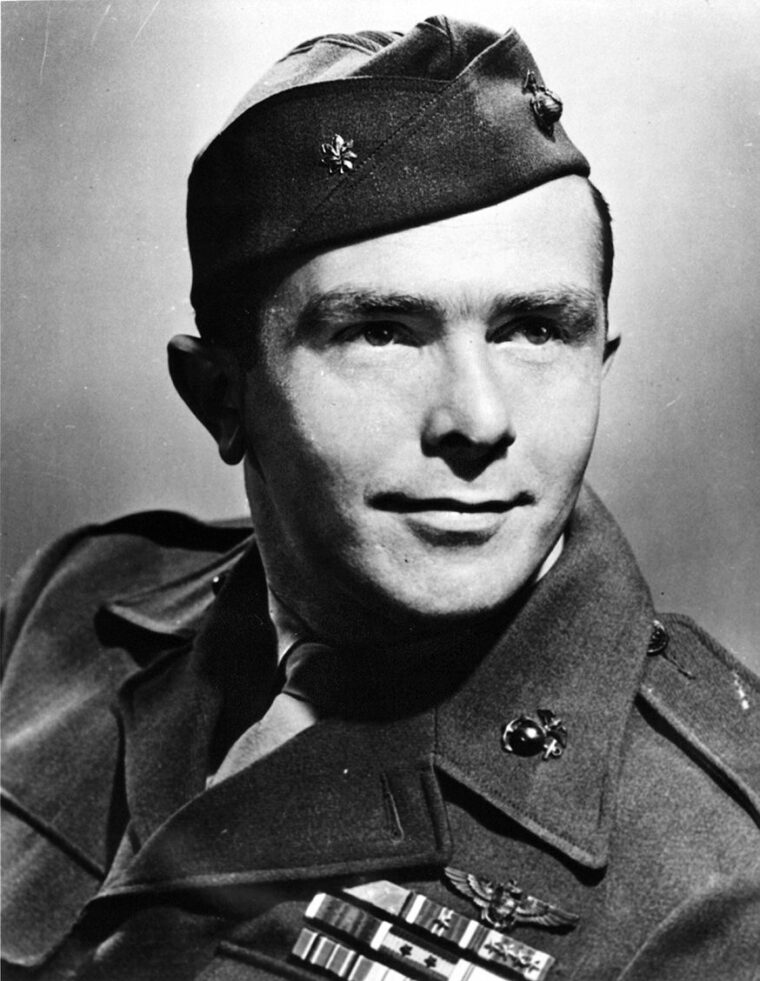
“After conducting survey operations in the last known position of the I-3 to the maximum depth of the ship’s Multi Beam Echo Sounder (MBES), Resolution headed to the Florida Island group to gather data where, according to Wray, “Moa, a Bird-class, British-built corvette, was sunk in April 1943. Survey operations in the area revealed many new finds, and among them was a Grumman F4F Wildcat.”
On November 9, 2011, Stevenson conducted the first dive on the Wildcat. Accompanying him on this dive were Neil Yates and several lucky dive tourists from Shell Harbor Scuba Center, Australia. Based on what was found on this dive and historic evidence, Stevenson hypothesized this Wildcat to be that of 1st Lt. Jim Swett, USMC.
To put this find in historical context, 1st Lt. James E. Swett of San Mateo, California, was on his first ever combat mission on April 7, 1943. He was with U.S. Marine Corps Fighter Squadron VMF-221, nicknamed “The Fighting Falcons.” VMF-221 was rebuilt in Hawaii after the Battle of Midway and deployed to the Solomon Islands in early 1943. On April 1, VMF-221 logged its first combat over the Russel Islands just to the northwest of Guadalcanal, claiming seven kills.
Swett was not part of that engagement, but less than a week later, on April 7, he flew an early morning patrol near Savo Island, then returned to base just as reports of many Japanese aircraft came in. His Wildcat was hurriedly refueled and rearmed. During a frenzied 15-minute period that soon followed, Swett claimed eight Japanese aircraft shot down. He was given credit for seven and one probable. However, it should be noted that gun cameras were not in use. Confirmation was based on eyewitness accounts from other pilots and personnel on the ground, both military and locals. And, as is generally recognized, like submarine skippers from this era, fighter pilots tended to exaggerate damage done. During the engagement for example, the American side claimed 19 victories—six Zeros and 13 Vals for a loss of seven American fighters. Another 25 Japanese aircraft were claimed by antiaircraft fire.
Admiral Chester Nimitz, commander of the U.S. Pacific Fleet, rightfully suspected duplicate claims, and a resulting study estimated the total damage done to the Japanese was fewer than 25 aircraft. Still, Swett was eventually awarded the Medal of Honor for his purported seven kills and one probable.
As Ewan Stevenson has pointed out, “This whole ‘claims’ thing is very sensitive. Swett’s accounts differ from book to book and get more inconsistent over the years. Unbelievably, I have not found an after-action report for Swett, and no after-action pilot interview.”
Proof of whether the Gavutu Wildcat is that of Swett will be based on archaeological evidence following future dives: evidence of battle damage from Japanese gunfire, condition of canopy, evidence of friendly fire, position of flaps, throttle position, ammunition expenditure, propeller position, location of crash site, comparison to other Wildcat crash sites nearby (a process of elimination), and missing seat (What happened to it?).
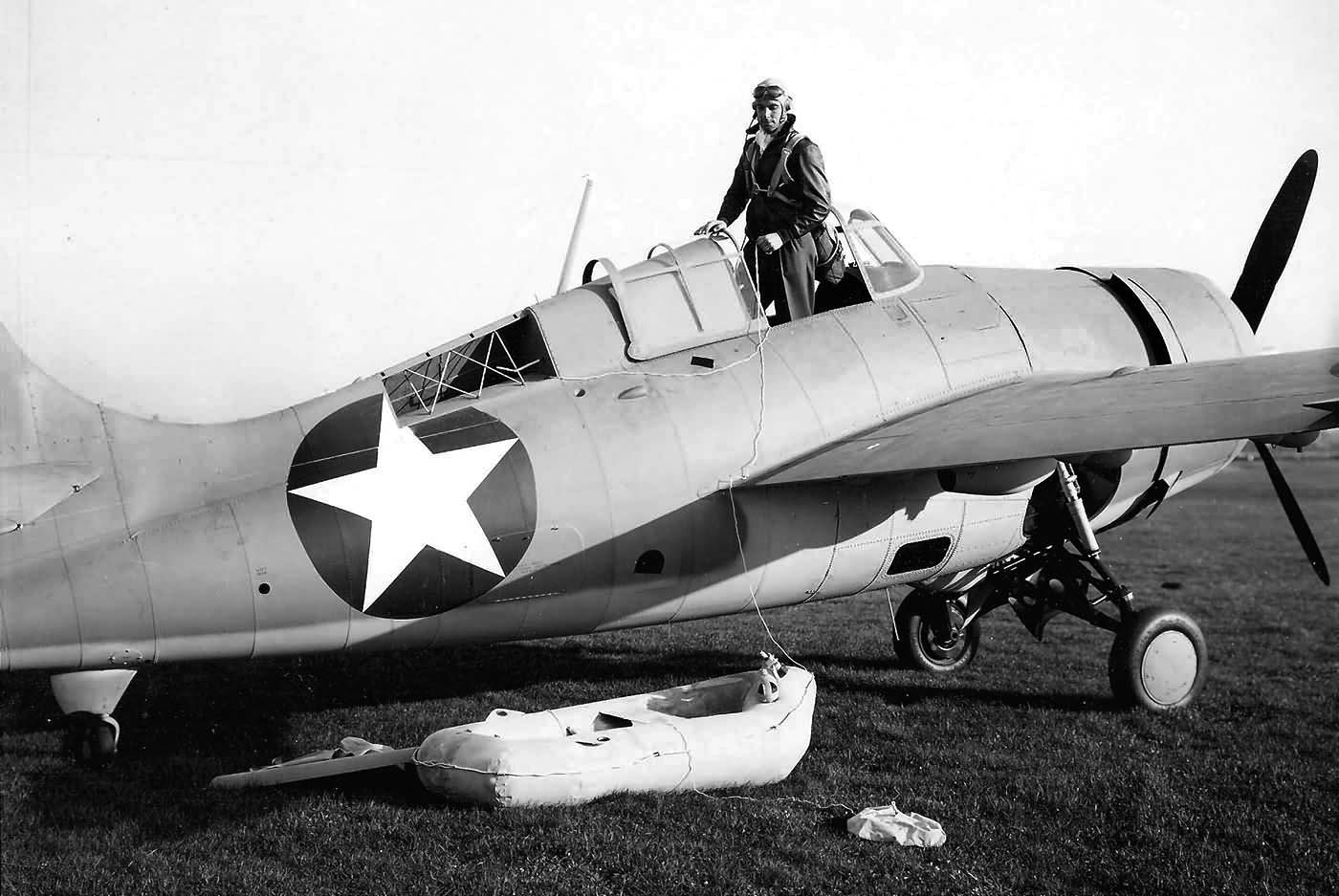
During his short but furious minutes of combat, Swett sustained damage from the rear seat gunner of his last victim—or so he thought—and friendly fire, when a 40mm antiaircraft shell went through his port wing. The resulting damage forced him to ditch near Gavutu Island, which Swett recounted, and is the basis of some of the archaeological evidence that was used in finding the aircraft.
“Without the primary evidence of a serial number derived from the site, we were left with analyzing the remaining archaeological evidence and seeing whether it corroborated or refuted Jim Swett’s account,” continues Stevenson.
As stated above, for unknown reasons individual pilot after-action reports from VMF-221 involved in combat on April 7, 1943, have not been found in the historical record. Normally, it would be standard practice for the squadron intelligence officer, in this case 1st Lt. A.E. Hacking, USMCR, to interview pilots post-battle and record in detail their observations and experience. If there was a post battle interview or after-action report, neither have survived. In the case of James Swett, this is most unusual, considering some sort of justification must have been put forward for his Medal of Honor award.
Post-war, Jim Swett’s account has been written and published many times. What is not obvious is whether the individual authors based their writing on textual materiel provided by Swett, actual interviews of Swett, or historical documents and existing published material. It is generally accepted that the most accurate accounts are those published closer to the event; the later the account, the less historically accurate. Details fade, inaccuracies increase, and erroneous assumptions are written in to fill gaps. With this Wildcat it is fortunate that postwar accounts are a rich source of detail which can be tested archaeologically.
To quote Stevenson directly in his after-dive report on 28 August 2018: “The heat-treated molybdenum steel engine mounts have given way and the Pratt and Whiney Model R-1830-86 radial engine has fallen forward. The combined archaeological evidence indicates this Grumman F4F-4 Wildcat is that of ‘ace-in-a-day’ 1st Lt. James E. Swett of VMF-221.”
Part of that evidence remains hidden below the sand, and if Stevenson’s prediction is correct, a three-bladed Curtiss Electric Model C5315S propeller will not be feathered, and all the hollow steel blades will be perfectly straight in line with Swett’s account. This might explain why no propeller blade is protruding above the sand and, as Swett related, his engine seized due to battle damage, and one of the blades was straight up in front of him.
Stevenson goes on to note that during the intervening seven years between the time the Wildcat was first located in 2011 and the more recent dive in 2018, the effects of time and saltwater have taken a toll on the aircraft. On the left side of the aircraft large holes have appeared in the 24ST aluminum alloy plating where it had peeled off. The pitot tube (airspeed measurement device) on the port wing tip has also fallen off during the same seven-year period.
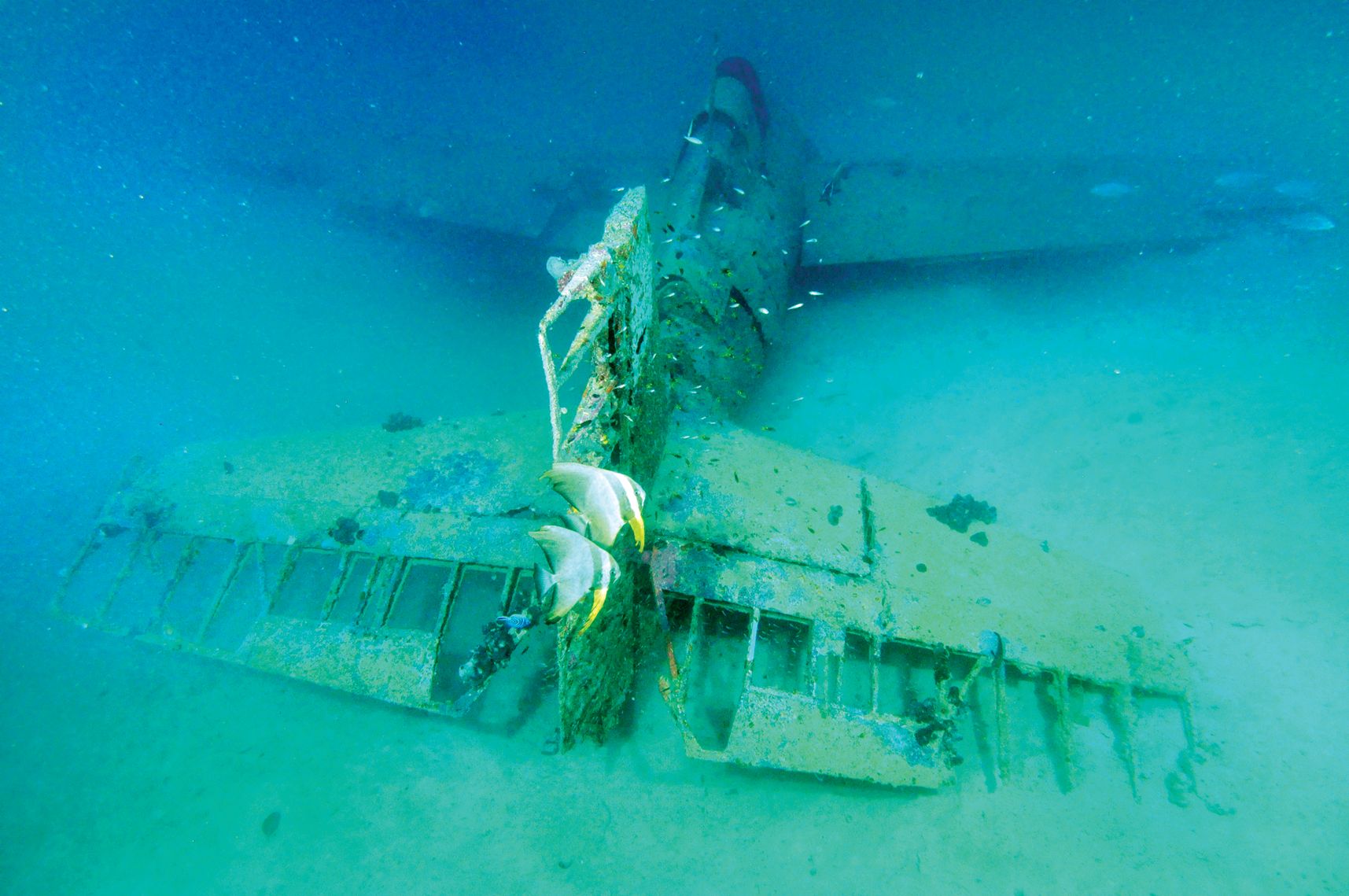
Looking back at the events of early 1943, the Japanese had given up on holding Guadalcanal, having pulled their surviving forces off the island two months earlier. However, they were not done inflicting damage against the Allies.
Admiral Isoroku Yamamoto, commander of the Japanese Combined Fleet, moved his headquarters to Rabaul on the island of New Britain earlier that year. In addition to the land-based aircraft the Japanese already had in the area, Yamamoto ordered additional carrier-based aircraft ashore and spread them from Rabaul to as far southeast as tiny Ballalae Island off the southern tip of Bougainville in preparation for one of the biggest Japanese air attacks in that part of the Pacific to date.
Historical research reveals at least nine Wildcats lost in the Florida Island group, which is just to the north of Guadalcanal. This includes Tulagi and other smaller islands in the area. During the length of the campaign, 115 F4Fs were lost from the Cactus Air Force, which was the name given for all Allied aircraft operating in the area at that time. Seventy were lost in aerial combat, 12 were destroyed on the ground, and 33 were operational losses. Carrier air groups operating in the area lost another 81. There may be others, but as Stevenson has observed, “Our research is based on limited access to historical records.”
Stevenson pointed out, “As most of the aircraft made semi-controlled [water] landings, the sites are going to be in good condition. The deeper the site, the better the site condition.”
The identification of individual aircraft found in saltwater is made difficult because, in the case of Wildcats for example, the Grumman manufacturing plates are located on the bulkhead behind the pilot and are not always accessible. The Bureau Number on the vertical stabilizer is stenciled in black paint one-inch high, and the plane’s side number used for quick identification on the airfield and in the air is painted on the rear fuselage in large, white paint. After more than 70 years, marine growth and corrosion make these numbers almost always impossible to recover. Thus, to date the only way to identify individual aircraft is through historical research and analysis. On subsequent missions to the Solomons, Sealark Maritime Exploration repeatedly dived the Gavutu Wildcat, each time gathering further archaeological information.
The only Navy Wildcat of the nine lost in the area was from VF-6, the “Shooting Stars.” Petty Officer pilot Julius Achten, USN, tangled with a Zero on the day of the Operation Watchtower landings, August 7, 1942, and landed in the waters off Tulagi after being shot up. He was picked up by a small landing craft and survived.
Another Wildcat, flown by Marine Corps squadron commander Major Robert Edward Galer from VMF-224, “The Fighting Wildcats,” was forced to ditch to the east of Florida Island on October 2, 1942, his second water landing in two weeks. This was after receiving the Navy Cross from Admiral Nimitz. Before the campaign was over, Galer had 13 kills, making him a double ace. In March 1943, he received the Medal of Honor. He was the sixth ranking Marine Corps ace of World War II.
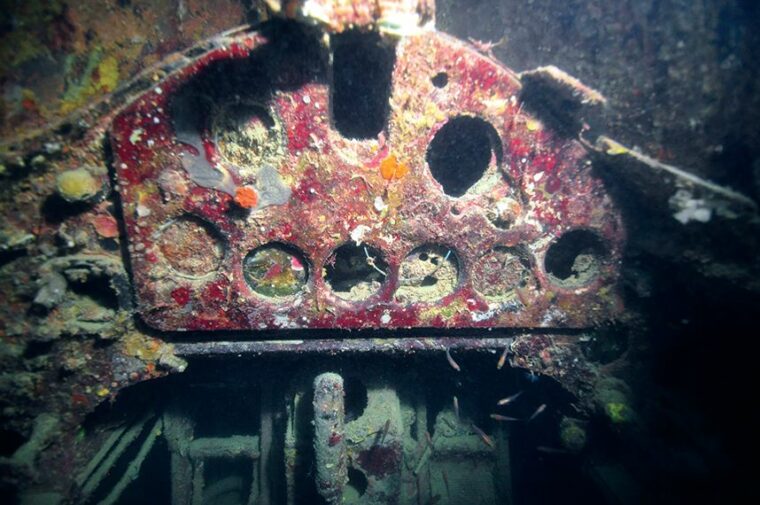
Second Lieutenant Edward K. Peterson of VMF-112 parachuted over Florida Island after being shot down. His F4F crashed on Nggela Sule Island, near Gavutu.
Most of the F4F Wildcats lost in the Florida group were from VMF-221 and were lost on April 7, 1943. Other pilots were, 1st Lt. Edward A. Walsh, who like Swett, crash landed in the waters near Tulagi, and 2nd Lt. P.P. Pittman, who was shot down over Tulagi, and although the record is not entirely clear, it appears he parachuted to safety.
First Lieutenant Wallace H. Hallmeyer was shot down over Tulagi, ditched close to Florida Island, and was the subject of another successful Sealark search in 2018. He was rescued by local Melanesians and returned to Tulagi the following day by canoe. According to historian Richard Dunn, Hallmeyer took shrapnel to the legs and was evacuated on April 19 of that year.
During the time spent on planning in Auckland and time spent together on the Resolution, Stevenson and Wray formed a friendship and a desire to keep trying to solve these World War II mysteries of missing aircraft and sunken ships. Early steps in 2014 saw the two of them form Sealark as a nonprofit company to pursue their work. The name has its origins from HMS Sealark, a Royal Navy survey ship that conducted hydrographic surveys around the Pacific in the early 1900s. She left her imprint on the Solomon’s with the named Sealark Channel close to the Florida Islands. Early in 2021, Sealark Maritime Exploration became Sealark Exploration to acknowledge the exploration on land as well as in surrounding waters and was incorporated as a U.S. 501c3 Not For Profit.
The impact of World War II on the Solomon Islands was significant then, as it is today. Many wrecks are still waiting to be found. Such discoveries not only provide information, and in some cases comfort, for the families of those who served there, but also benefit the local population today.
Bruce Petty is the author of five books, four of which concern World War II in the Pacific. He is a resident of New Plymouth, New Zealand.
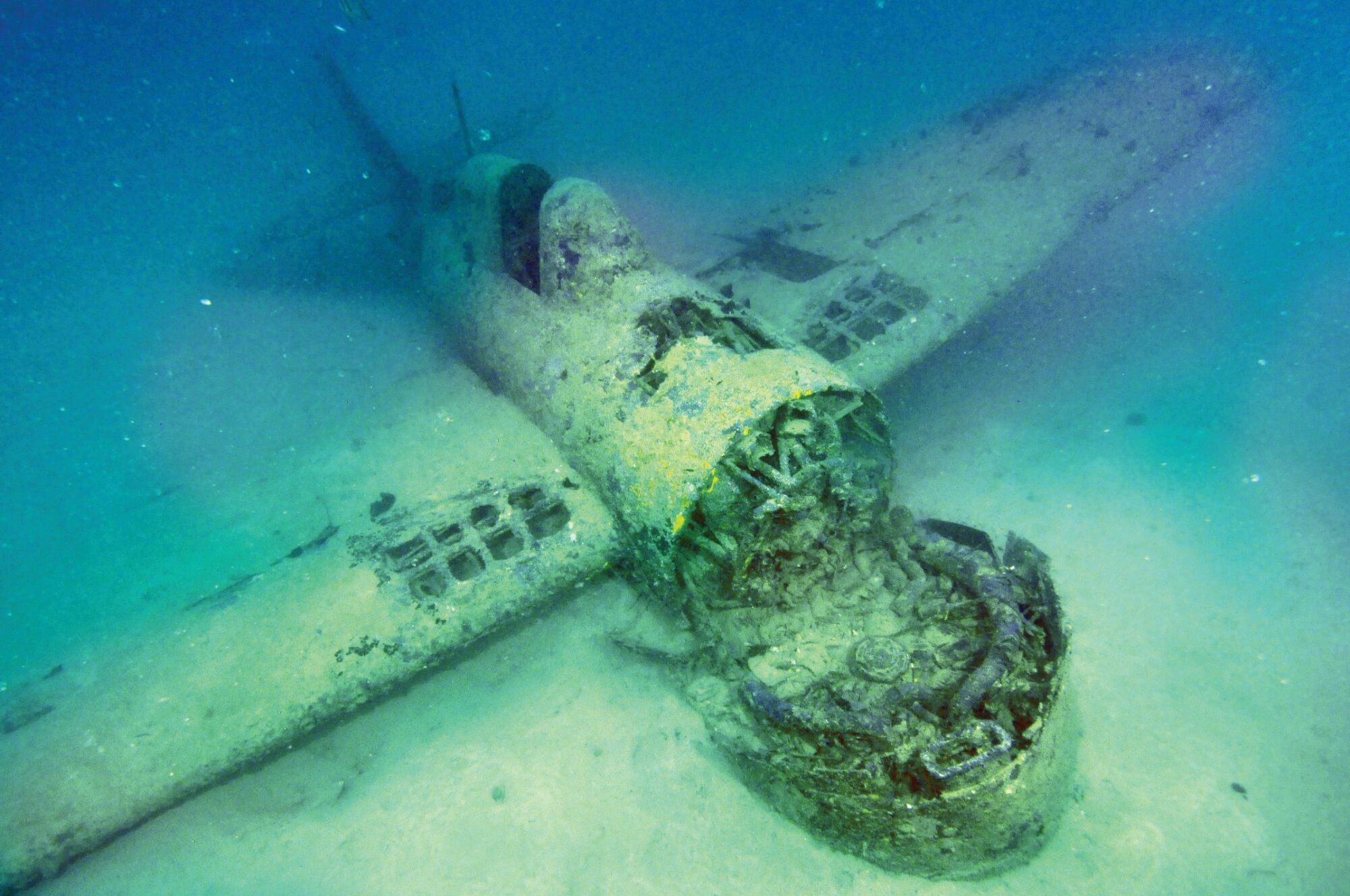

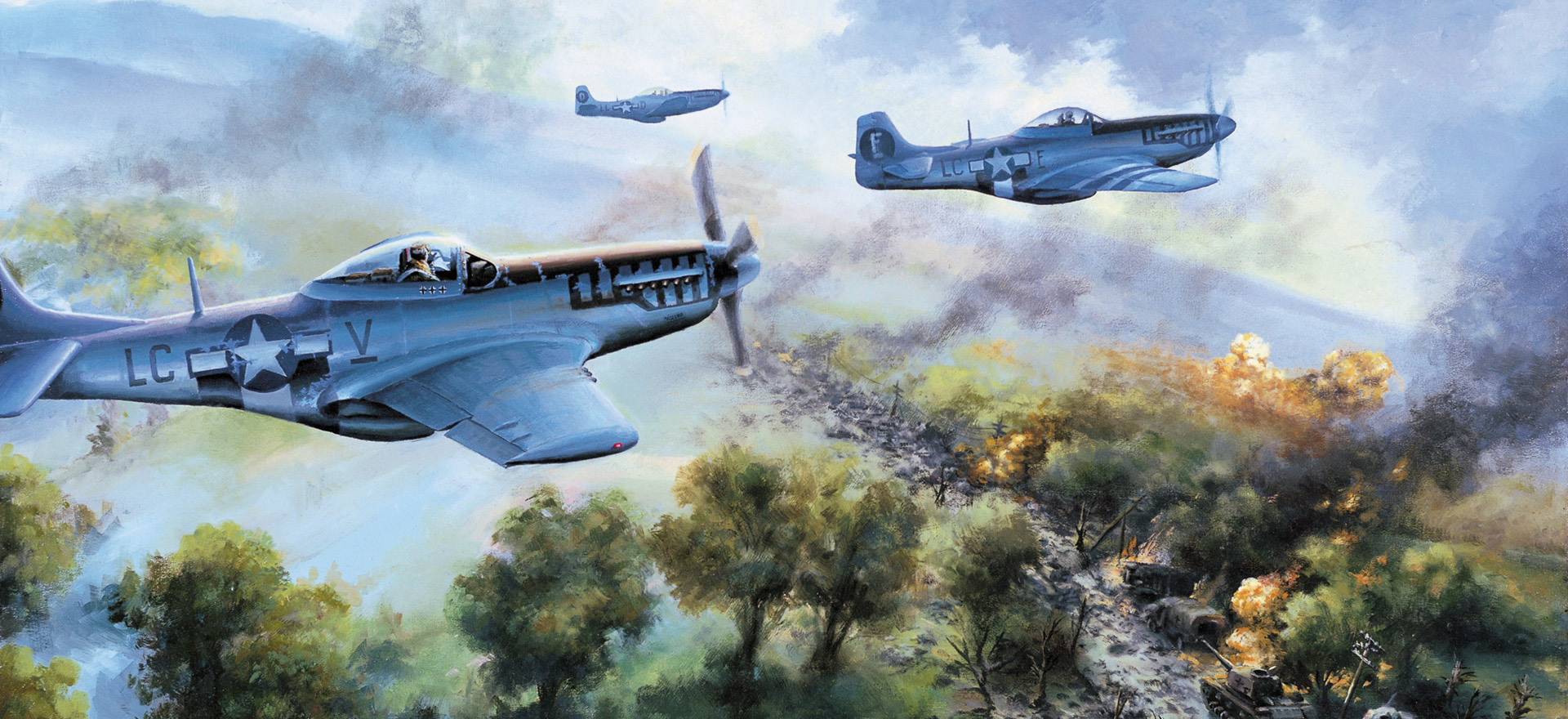
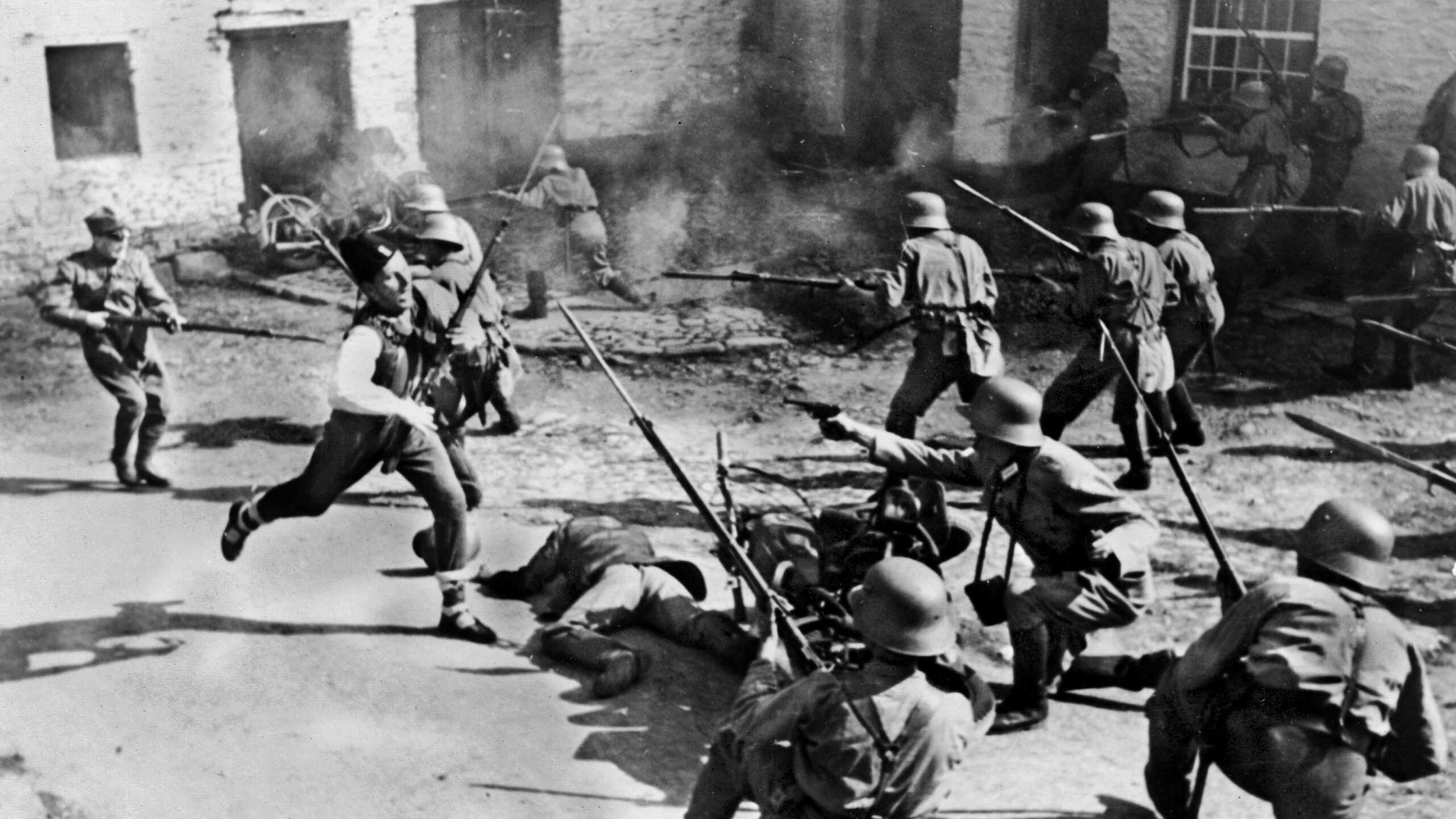
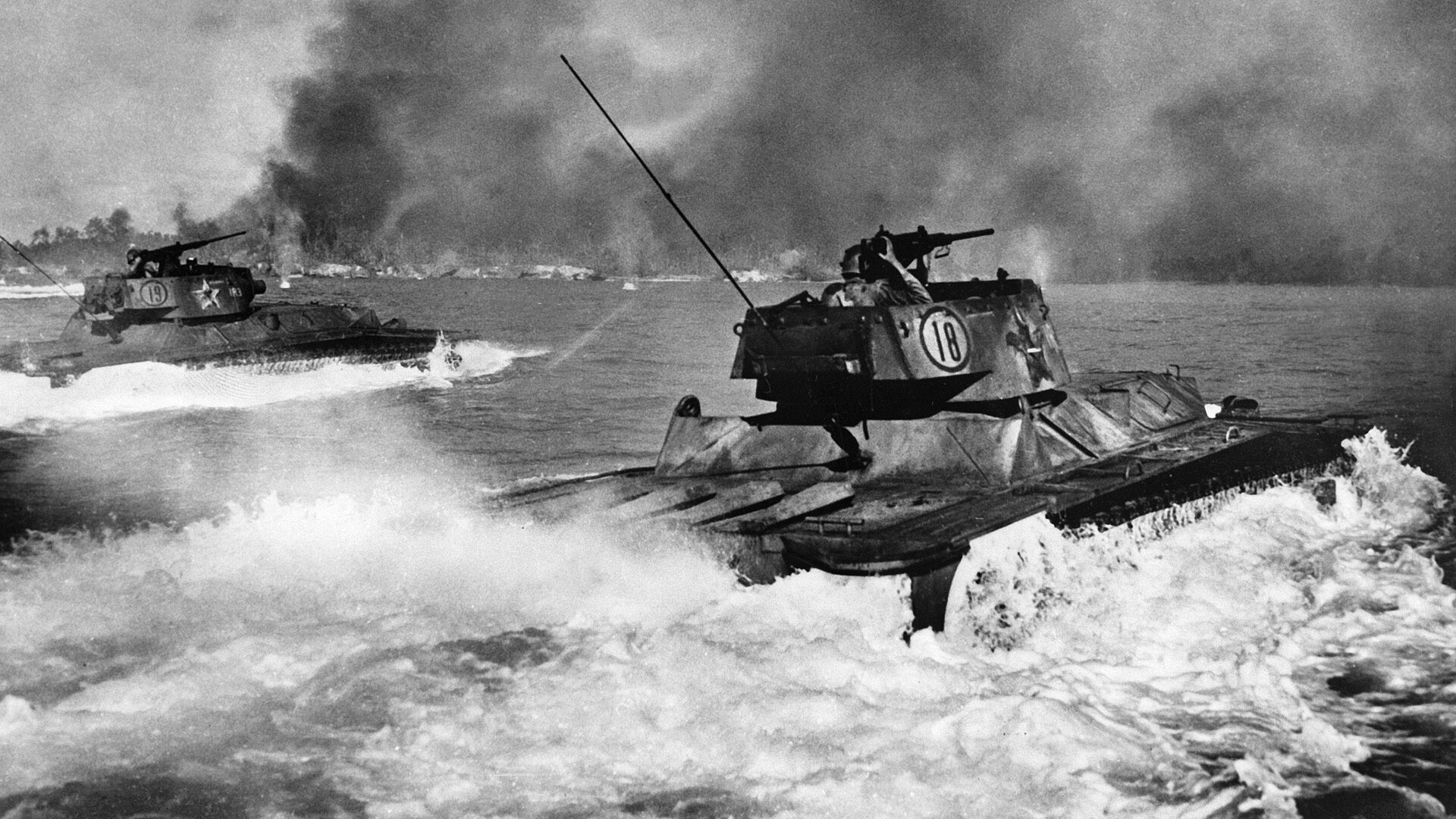
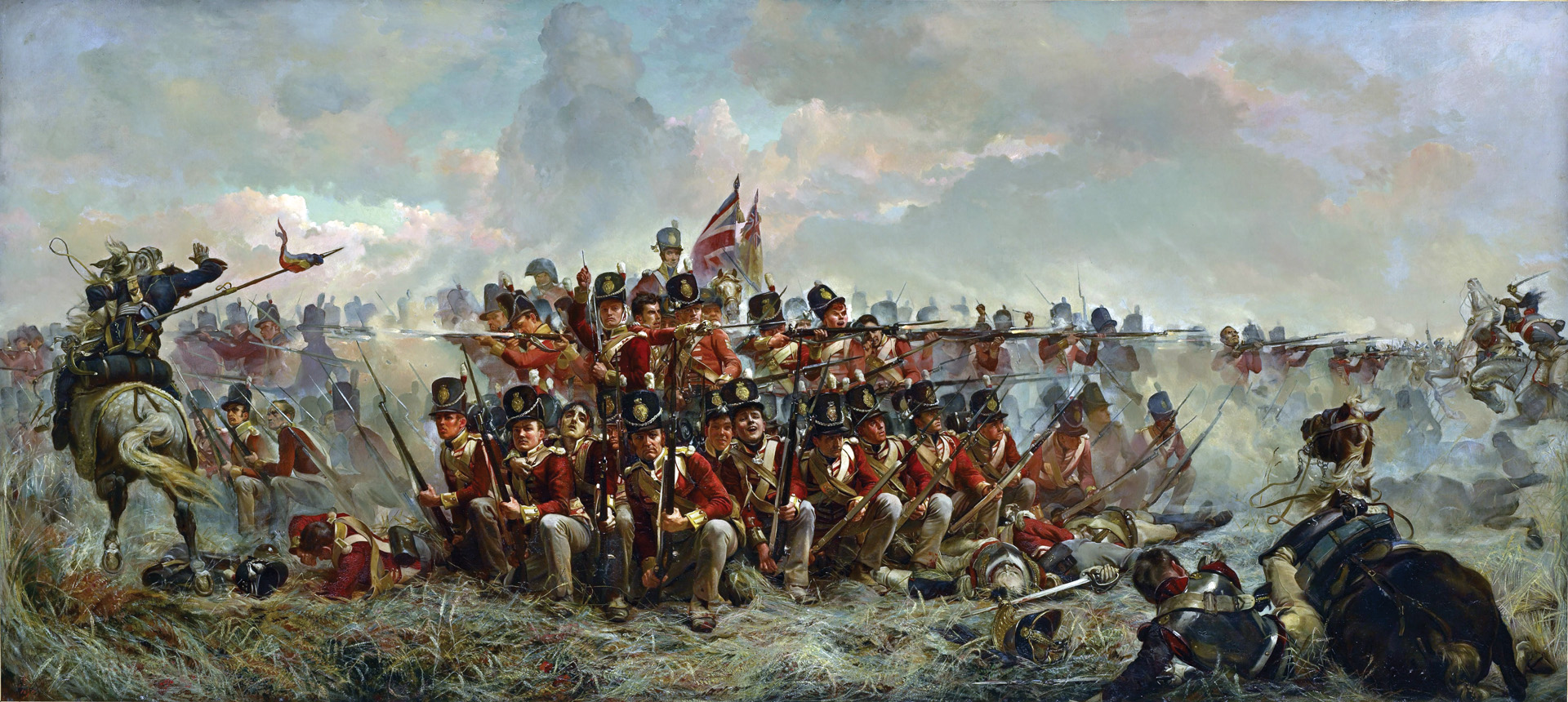
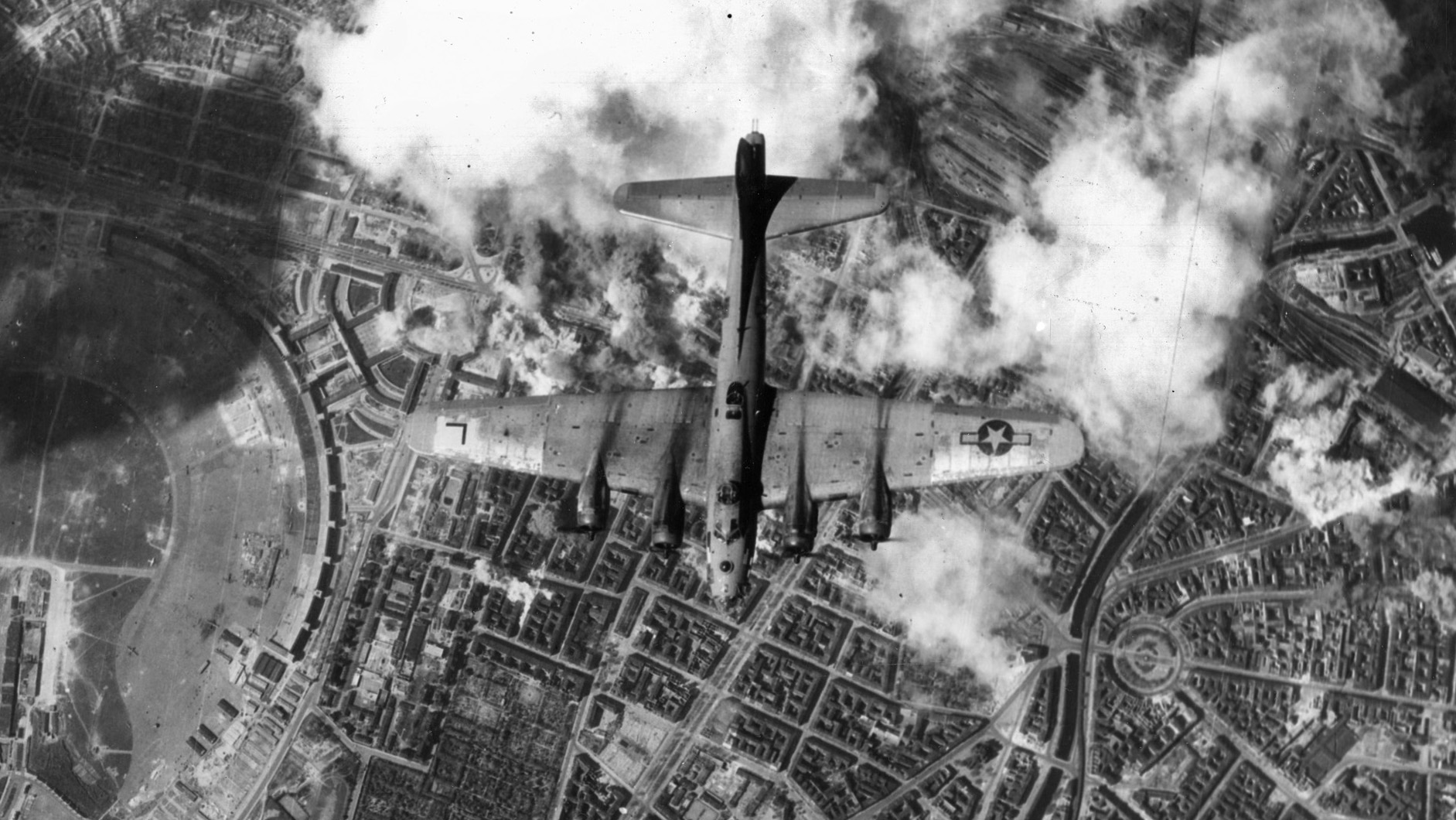
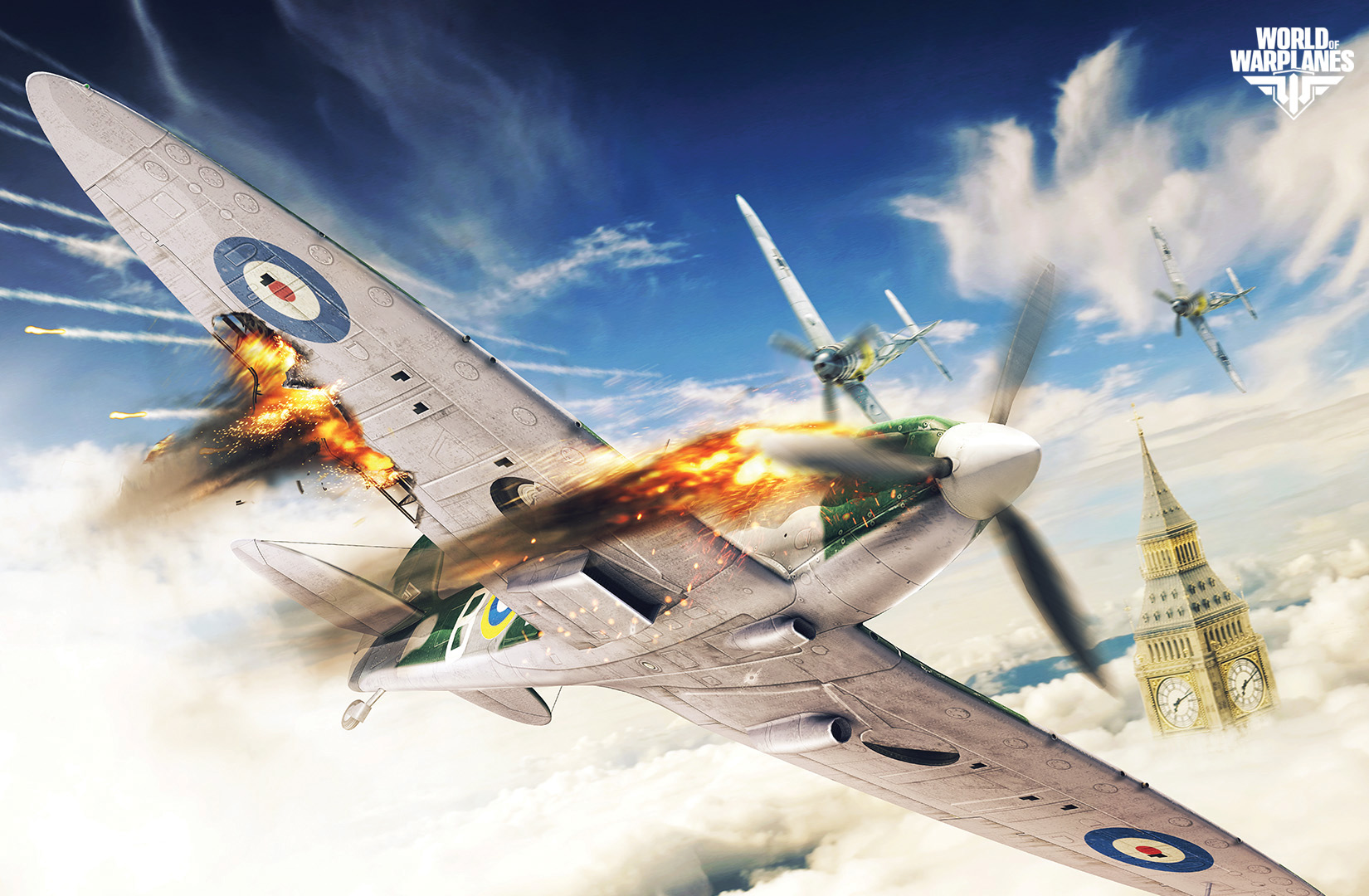
Join The Conversation
Comments
View All Comments